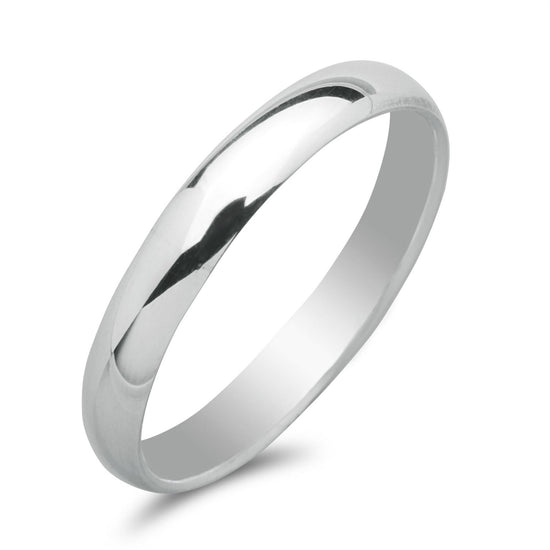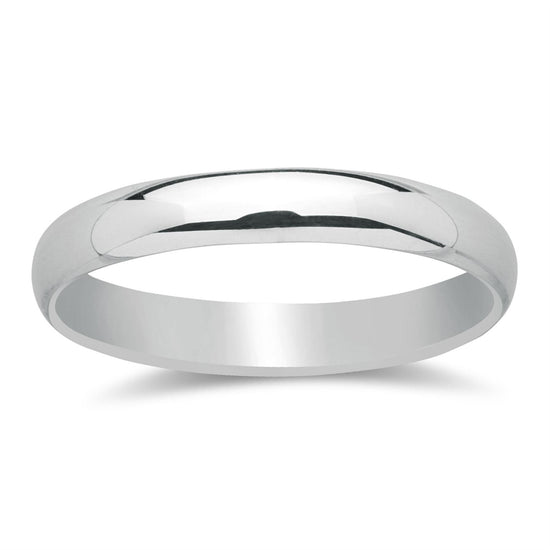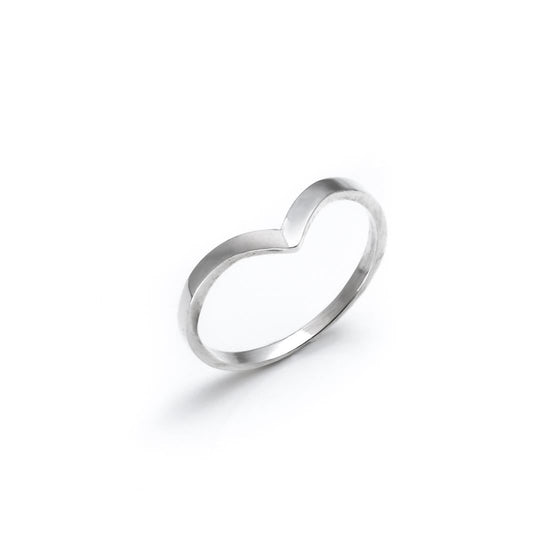
Join us on a sparkling adventure as I explore the different types of silver used in making your jewellery. I'll break them down, talk about what makes them special, and dish out the pros and cons.
Get ready for some silver talk!
Sterling Silver (92.5% Silver)
Read more on sterling silver's pros and cons here.
Pure or Fine Silver (99.9% Silver)
The purest form of silver used in jewellery, fine silver, contains 99.9% silver. It stands out for its bright luster and hypoallergenic properties, making it suitable for sensitive skin. With a higher silver content, it's also more resistant to tarnishing and less likely to cause skin discoloration. Whoop!
On the downside, 999 pure silver may scratch more easily because of its elevated purity. It lacks the strengthening alloys found in lower purity silver, making it softer and more susceptible to damage from regular wear.
Pros:
- Radiant shine
- Low maintenance
- Durable enough for everyday wear and can withstand the test of time with proper care
- With minimal alloys, it's less likely to cause skin discoloration than sterling silver
- Usually more hypoallergenic than sterling silver
- Usually more tarnish-resistant than sterling silver
Cons:
- Softer than sterling silver and more prone to scratches and dents
- Often more expensive than sterling silver
Hill Tribe Silver
Hill Tribe silver, crafted by indigenous artisans in Northern Thailand, typically contains a high silver content, often above 95%. Hill Tribe jewellery is celebrated for its handmade, unique designs and cultural significance. Moreover, Hill Tribe silver boasts a distinctive matte, satin-like finish that sets it apart from conventional silver items. Because it usually has a higher silver content than sterling silver, it's also less likely to cause green fingers!
The malleability of Hill Tribe silver (like fine silver) makes it easier for artisans to work with, enabling them to create finer, more detailed designs. Yet, its softness makes it more susceptible to damage.
Pros:
- Unique matte finish
- Exceptional handmade craftsmanship
- Low maintenance
- Durable enough for everyday wear and can withstand the test of time with proper care
- With minimal alloys, it's less likely to cause skin discoloration than sterling silver
- Usually more hypoallergenic than sterling silver
- Usually more tarnish-resistant than sterling silver
Cons:
- Usually softer than sterling silver and more prone to scratches and dents
Argentium Silver (93.5%, 94% or 96% Silver)
Argentium Silver is like the superhero of the silver world! A modern innovation in the silver family. Argentium has more silver than sterling silver, usually 93.5% or higher.
The key to Argentium's strength and radiance is the substitution of some or all of the copper (usually present in sterling silver) with germanium. When germanium is added to silver, it creates a thin, invisible oxide layer that toughens the metal, making it more resistant to damage and bending. Germanium also reduces firescale, preventing the uneven surface that makes silver prone to tarnishing. Lastly, the inclusion of this non-reactive metal enhances Argentium's hypoallergenic properties beyond those of conventional sterling silver. It's a win-win-win!
Wait, there's more! With extra silver, 0% nickel, and less copper to speed up oxidation, Argentium Silver is even more hypoallergenic and resistant to tarnish. It's perfect for worry-free daily wear and is often sourced from recycled materials, appealing to ethically-minded consumers.
Mexican Silver
A "Mexican Silver" label suggests that the jewellery is made by skilled artisans using traditional methods, showcasing Mexico's cultural legacy. However, the name of the country of origin doesn’t guarantee quality or silver purity. Look for a stamp or proof of authenticity to ensure the silver's quality and purity.
It's typical for Mexican silver to contain at least 92.5% silver content, similar to the sterling silver standard, but some pieces might have higher purity levels, reaching up to 99.9%. The precise percentage can vary based on the specific piece, artisan, or regional traditions.
Pros:
- Its advantages depend on the quality and purity of the silver
- Unique traditional designs
Cons:
- Its disadvantages depend on the quality and purity of the silver
- Requires caution to avoid counterfeit or low-quality silver.
Britannia Silver (95.8% Silver)
Britannia silver, boasting a silver content of 95.8%, is renowned for its exceptional malleability, making it an ideal choice for crafting intricate designs. Due to its higher purity, rendering it softer and more susceptible to wear and tear, Britannia silver exhibits a resistance to tarnishing that surpasses that of sterling silver.
Pros:
- Brilliant sheen
- Low maintenance
- Durable enough for everyday wear and can withstand the test of time with proper care
- Usually more tarnish-resistant than sterling silver
- Usually more hypoallergenic than sterling silver
- Less likely to cause skin discoloration than sterling silver
Cons:
- Softer than sterling silver
- Usually more expensive than sterling silver
Silver Plated on Base Metal
Silver plating involves coating a base metal, such as copper or brass, with a thin layer of silver. This process creates a piece that has the appearance of solid silver at a fraction of the cost.
Silver-plated items are popular for their affordability and silver-like appearance, but the plating will wear off over time (sometimes in a matter of weeks), revealing the base metal beneath. Picking silver-plated for long-lasting jewelry is like hoping a paper umbrella will survive a monsoon. Good luck with that! ☔😅Additionally, some sellers sell silver plated jewellery for a lot more than its worth by marketing it as 'luxury' when it's not.
Pros:
- Temporarily mimics the appearance of sterling silver
- Usually much cheaper than sterling silver
Cons:
- Not as durable as sterling silver
- More prone to causing skin discolouration and allergies compared to sterling silver
- Limited lifespan
- Lower resale value
- Often overpriced
Vermeil (Gold Plating on Sterling Silver)
Vermeil offers the best of both worlds: the durability of silver with the luxurious appearance of gold. It involves coating sterling silver with a thin layer of gold, resulting in a piece that is much cheaper than solid gold but with a similar aesthetic.
What really makes vermeil jewellery stand out from regular gold-plated stuff is the seriously thick gold layer—a whopping 2.5 microns or more! Sure, the gold layer might wear off with lots of use, but you'll still get to rock a gorgeous sterling silver piece if this happens.
Pros:
- Luxurious gold appearance
- More affordable than gold
- Sterling silver base metal (see metal's pros and cons)
- Thicker layer of gold than regular gold-plated items
Cons:
- Gold layer may wear off over time
- Less durable than gold
- Less resistant to tarnish than gold
- More likely to cause skin discoloration than gold due to the presence of sterling silver.
- Individuals with metal allergies or sensitivities may experience reactions to the sterling silver base metal
Gold Plating on Sterling Silver
Gold-plated silver is created when a layer of gold is applied to the surface of solid silver through a process known as electroplating. This process offers a gold look at a lower price.
It's important to note that the thickness of the gold layer can vary, and with time, the gold plating may wear off, revealing the sterling silver underneath. The longevity of the gold plating depends on factors like gold layer thickness, the quality of the plating process, and how frequently it's worn.
If you're looking for long-lasting jewellery and love gold as much as silver, then this is the metal for you. As the plating wears off, it will slowly transform into a stunning silver piece, just like a butterfly emerging!
Pros:
- Luxurious gold appearance
- Sterling silver base metal (see metal's pros and cons)
- More affordable than solid gold and vermeil gold
Cons:
- Gold layer may wear off over time
- Plating thickness varies
- Less durable than gold
- Less resistant to tarnish than gold
- More likely to cause skin discoloration than gold due to the presence of sterling silver
- Individuals with metal allergies or sensitivities may experience reactions to the sterling silver base metal
*If you're worried about allergies from nickel or other metals, always check with the seller or artisan about what's in the silver item you want to buy.

















